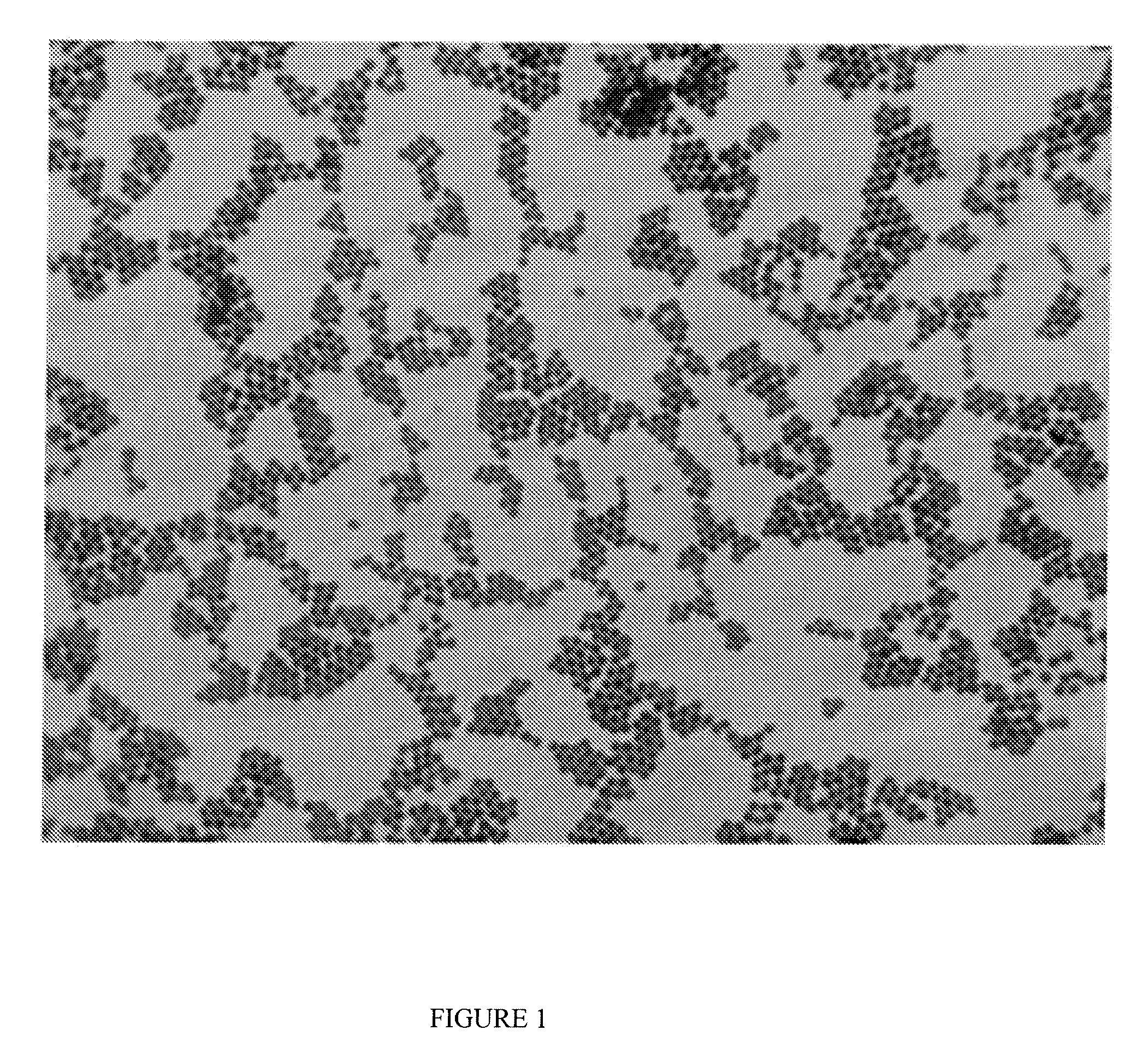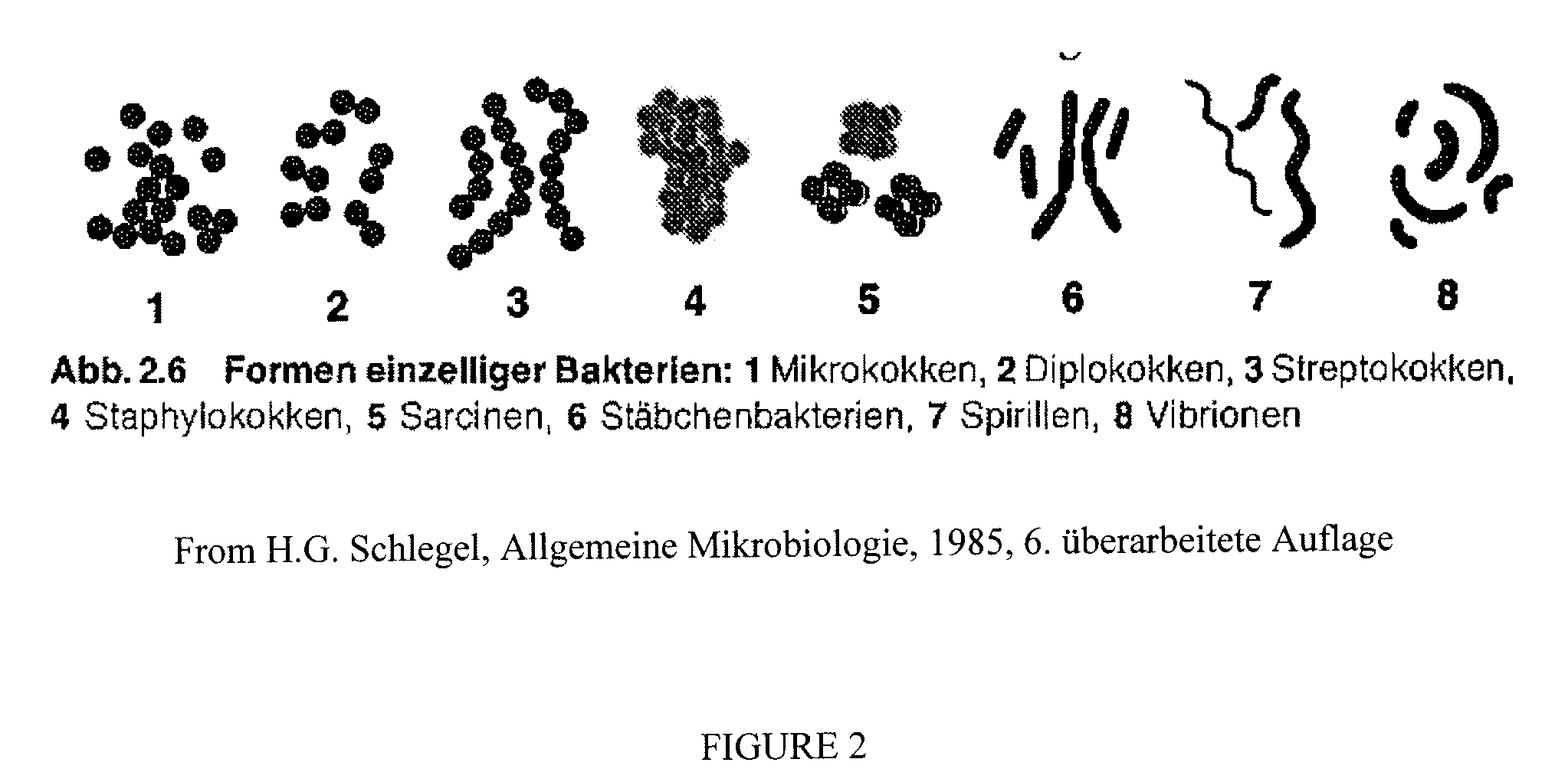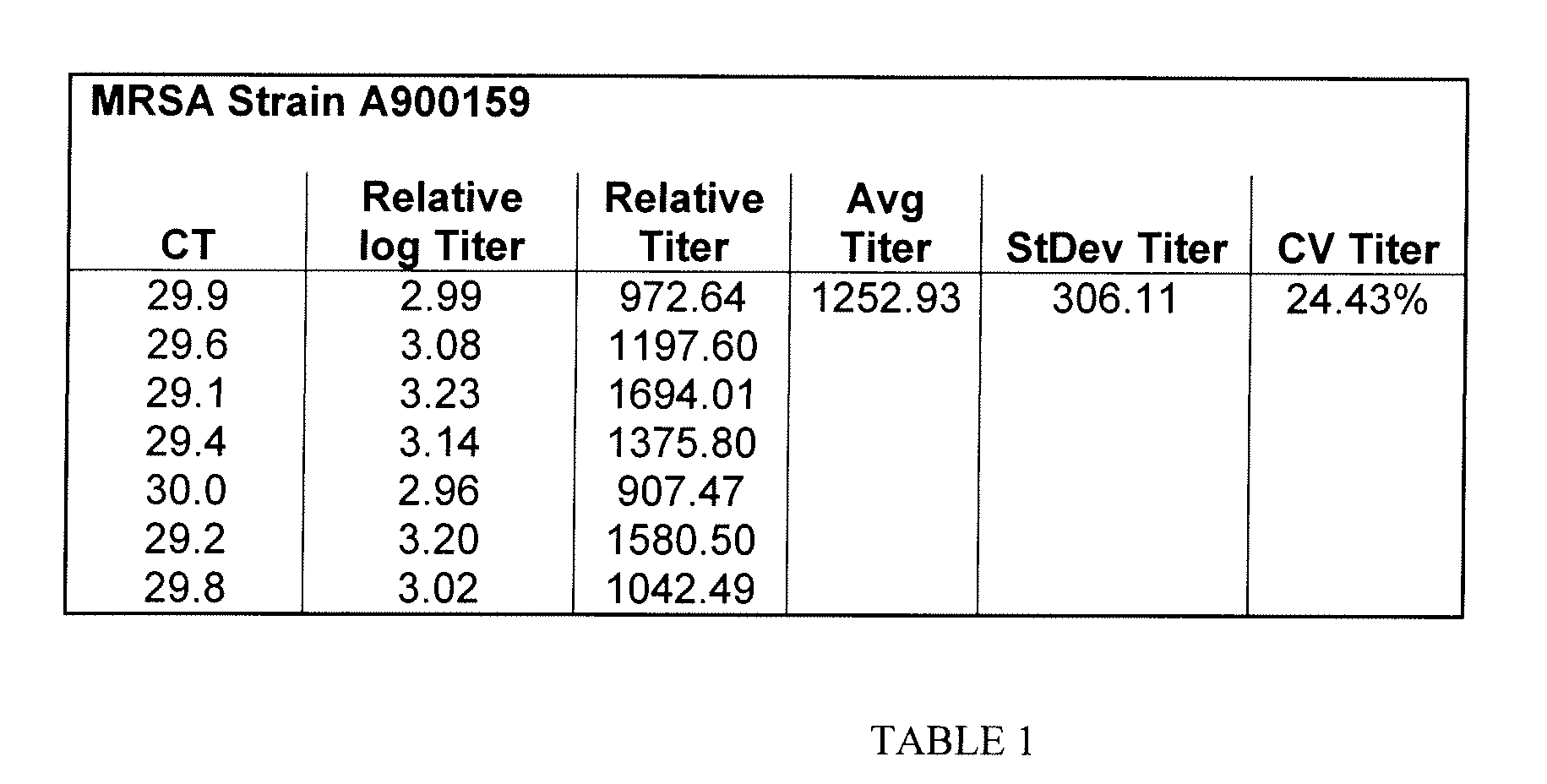Controls For Detecting Methicillin Resistant Staphylococcus Aureus (MRSA)
- Summary
- Abstract
- Description
- Claims
- Application Information
AI Technical Summary
Benefits of technology
Problems solved by technology
Method used
Image
Examples
example i
Non-Aggregating MRSA
[0038]Appropriate safety procedures were followed to prevent transmission of MRSA. MRSA strain A900159 was obtained and subcultured in trypticase soy agar. The colonies were subsequently plated on oxacillin screen agar and CHROMagar MRSA (Becton-Dickinson) to confirm the identity of the cells as MRSA. Colonies were then inoculated in trypticase soy broth and incubated at 37° C. for 16 hours. The bacterial culture was then centrifuged at 1000×g for 30 mins and the supernatant was removed. The bacterial pellet was then resuspended in a matrix containing of 10 mM Tris pH 8.0, 1 mM EDTA pH 8.0, 150 mM NaCl, 2% Human Serum Albumin, 15% Glycerol, 0.05% Sodium Azide, and 0.05% Gentamicin Sulfate. The sample was serially diluted 10,000 fold, vortexed at a medium setting and 100 μl samples were tested on the Cepheid Gene Xpert MRSA assay (Table 1). Results show that the percent CV of the titer is 24% for the strain ATCC #A900159.
example ii
Inactivated MRSA Organism
[0039]A water bath was filled with distilled H20, then adjusted to 30° C.±15° C. An active MRSA cell suspension that was stored at −70° C. was thawed in a biosafety cabinet at ambient conditions (25° C.±15° C.). The cell suspension was then vortexed at a medium setting and mixed by reverse pipetting. The cell suspension was then pelleted by centrifuging at 14,000 RPM for 1 minute. The supernatant was then decanted and the pellet was resuspended in 1×PBS using half the initial cell suspension volume to wash the pellet. The pellet was resuspended using reverse pipetting and vortexing at a medium setting. The washed cell suspension was pelleted by centrifuging at 14,000 RPM for 1 minute. The supernatant was then decanted and the pellet was resuspended in 1×PBS using half the initial cell suspension volume to wash the pellet. The pellet was resuspended using reverse pipetting and vortexing at a medium setting. Five percent (5%) formalin solution was added at a v...
example iii
Comparison of Different Strains of MRSA to Demonstrate that the Strain does not Aggregate. Comparison Performed Through Microbiological Staining and by Real-Time PCR
[0040]100 μl of a 10,000-fold dilution of active MRSA (ATCC#43300) and active pls-expressing MRSA (strain A900159) were tested using the Cepheid Gene Xpert MRSA assay. Table 1 and Table 2 indicate that pls-expressing MRSA (strain A900159) has a lower CV (24.43%) than the MRSA strain (ATCC 43300) that does not express the p / s gene (141.74%). ATCC strain #43300 is recommended as the specimen processing control for the BD GeneOhm MRSA assay.
PUM
| Property | Measurement | Unit |
|---|---|---|
| Fraction | aaaaa | aaaaa |
| Fraction | aaaaa | aaaaa |
| Fraction | aaaaa | aaaaa |
Abstract
Description
Claims
Application Information
 Login to View More
Login to View More - R&D
- Intellectual Property
- Life Sciences
- Materials
- Tech Scout
- Unparalleled Data Quality
- Higher Quality Content
- 60% Fewer Hallucinations
Browse by: Latest US Patents, China's latest patents, Technical Efficacy Thesaurus, Application Domain, Technology Topic, Popular Technical Reports.
© 2025 PatSnap. All rights reserved.Legal|Privacy policy|Modern Slavery Act Transparency Statement|Sitemap|About US| Contact US: help@patsnap.com



